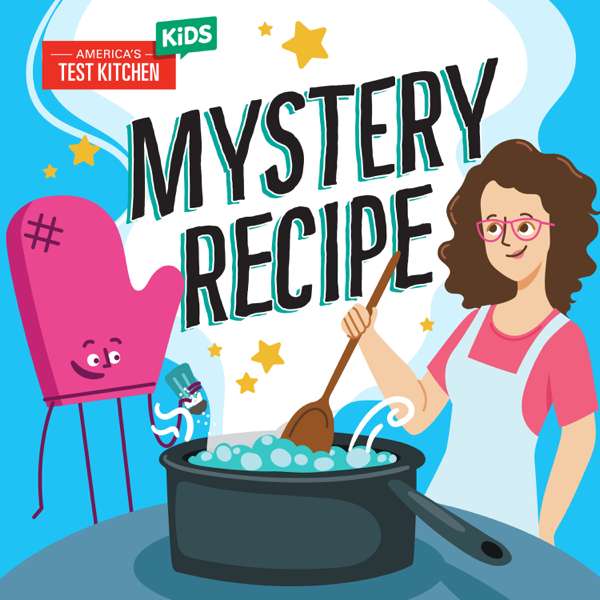Teaching children to clean is a daunting task, whether we have one child or 13. In this episode we talk about how to teach kids to clean, with an emphasis on what jobs different moms expect their children to do, how they train their children to do these jobs, and what systems they use, including Emily’s system.
Links mentioned in this episode
Why My Kids Don’t Have Chores
Why I Don’t Make My Kids Do Chores
Books:
The Parenting Breakthrough, by Merrilee Boyack
Blog Posts:
Power of Families: Two Tips for a Clean and Happy Home
Mentoring Our Own: The Remedy to Chore Wars
Podcasts:
Edit Your Life Podcast, episode 149: How to Teach Kids Life Skills
Moms Who Know Podcast, December 17, 2017: Donna Goff: Family Work
NPR, Weekend Edition: How to Get Your Kids to Do Chores (Without Resenting It)
Family Looking Up, Episode 41: How To Raise Kids to Be Independent Adults, with Merrilee Boyack
Other Links:
Song For a Fifth Child
100 Life Skills You Can Teach Your Kids in Five Minutes or Less
Full text:
At the moment, Emily Widdison is a mother to 13 children. This number fluctuates, because she is a foster mom, but nine of those 13 are permanently hers. Mothering this many little people has a whole host of logistical challenges, not the least of which is keeping the house clean. And yet she does—for the most part. Or more accurately, they all do.
She started her current chore system about six years ago, when she went from four children to eight, all nine years old and under, including a brand-new baby. One morning after the kids left the house for school, the kitchen was just trashed, and she realized she couldn’t do this herself. So later that day, she sat her kids down and said, “I need help. It can’t be just one little job or just your room.” And the kids stepped up.“
Today’s episode is “How She Teaches Kids to Clean,” a daunting task whether we have one child at home or 13. Once I started researching, I realized what a monumental topic this is, so I’m actually splitting it up into three episodes: this one, about teaching kids to clean, another about how to teach kids to be tidy, and a third entitled “How She Motivates Kids to Work.”
In this first episode we’ll talk about how to teach kids to clean, with an emphasis on what jobs different moms expect their children to do, how they train their children to do these jobs, and what systems they use, including Emily’s system.
As always, I love a good controversy, and there’s plenty here. I have run across several articles written by mothers who don’t believe in giving their kids chores—even one that said that making children clean is tantamount to child abuse. I’ll link to a few of those articles in the show notes, if you’re interested, but for now I’ll just give a brief rundown of their arguments:
- Let kids be kids. They have the rest of their lives to work.
- Mundane household tasks are much easier to learn when kids are older. They’ll figure it out.
- Kids should still have to pick up after themselves, clean up toys, and bring their plates over, just not do extra things like washing dishes, doing laundry, and scrubbing toilets.
Many of these moms in the no-chores camps were raised with no chores themselves, and they not only turned out alright but they run a household capably now.
If this is your philosophy, I still love you, but it doesn’t make for a very useful podcast episode, because the only tip for that strategy is: Don’t make your kids clean. So the rest of this episode will be based on the assumption that kids shouldbe doing work around the house.
Strategy
First let’s talk about strategy. If you’re new here, I always start each topic by talking about strategy and objectives. What are you trying to accomplish here? When it comes to teaching kids to clean, some obvious objectives are to:
- Train kids to take care of themselves and a home
- Teach kids the satisfaction of hard work.
- Combat entitlement.
- Lighten your workload.
- Have a clean house.
- Clean the house efficiently.
The problem is, some of these objectives are diametrically opposed. At least at first, putting kids in charge of household chores does not lighten your workload, and does not result in a very clean house. It’s a lot more work to teach a kid how to sweep the floor, for example, than to sweep it yourself. Even once the kid has the skills, it often takes you much less time to do it yourself than to actually get them to do it. And it takes kids a long time for a child’s cleaning skills in any given area to match your standards.
So, when you’re defining your personal strategy for teaching kids to clean, be very honest about how you prioritize these objectives, or any others. You also have to decide where you draw your cleanliness line. If you have pretty high standards for how clean you want your house to be, you might be more careful about what type of jobs you assign to kids. If you’re okay with a fair amount of chaos, you might want to delegate more to the kids.
For example, I grew up in a house with a fairly relaxed standard of cleanliness. This was intentional on my mother’s part. Framed on our wall was an excerpt from Ruth Hulbert Hamilton’s poem, “Song for a Fifth Child”:
“Oh, cleaning and scrubbing will wait till tomorrow, But children grow up, as I've learned to my sorrow. So quiet down, cobwebs. Dust, go to sleep. I'm rocking my baby and babies don't keep.”
I’ll link to the full text of the poem, in my notes. http://aboverubies.org/index.php/ar-blogs/womens-daily-encouragement-blog/entry/song-for-a-fifth-child
As a result of this philosophy, our house was clean but cluttered. My mom taught us how to scrub our bathrooms, clean the kitchen, do our laundry, etc., but we all tolerated quite a bit of daily clutter. A common phrase my mom would sing out when someone came to the door was, “Come in if you can get in!”
On the other hand, my friend Lisa’s house is generally clutter-free and gleaming. I thought that to achieve that kind of clean, a mom would have to be yelling at her kids all the time, but Lisa’s motto is “Calm and Kind,” and she actually follows that motto. But that doesn’t mean she doesn’t have to work really hard to achieve this kind of lofty objective. Especially when her kids were younger, her high standards required a lot of hands-on training. This work is worth it to Lisa, because when the house gets messy, she gets anxious and unsettled.
It’s a great idea to be realistic and figure out where you fit in along this continuum. What kind of clean are you hoping to achieve?
Division of Labor
Part of figuring out your cleaning strategy is figuring out how you want to divide the labor. What tasks are you going to leave to the parents and what will the kids be in charge of?
One way to divvy up chores is to write up a list of all the chores that need to be done on a daily and weekly basis to keep the house running smoothly, and then have the kids help figure out who should do what. I have done this a few times, and it’s a great way for them to see visually how much work it requires to run a house—and how much of it I usually do by myself.
With a bit of creativity, you can think of chores that allow even the youngest members of your household to help. Young children are great at sorting clean silverware or dirty laundry. Sarah Fedotov created a great daily chore for her 6-year-old. His job is to collect any shoes he can find and line them up neatly in the closet.
Be careful about your expectations here, though. Before kids, Lisa had big plans for how she was going to start teaching her kids to clean as early as possible. This led to some very unnecessary power struggles with her three-year-old. She says, “Eventually, I learned to have pretty low expectations for cleaning skills for kids younger than eight. Their efforts are about the process rather than the product. Until age eight, my strategy for teaching my them to clean is to encourage them and make cleaning fun, with low expectations for the actual quality of the work. The goal is to let them practice working and get in the habit of helping.”
Another way to decide what your kids could or should be in charge of is to see what other kids are doing at their age.
You don’t have to start from scratch here, and it’s often better if you don’t, because often other people will think of jobs that hadn’t occurred to you. I have found many lists of age-appropriate chores online, and over the years I’ve cobbled together my own list based those lists.
My favorite list is the one Marilee Boyack, author of “The Parenting Breakthrough” created for her kids. She calls it The Plan, and in addition to cleaning jobs, it includes life skills such as making and keeping your own appointments and opening a bank account. It starts at age three with things like, “dress self,” “use toilet independently,” and “pick up toys,” continues through each age with things like learning to load and empty a dishwasher at age six, and mopping floors and baking cookies at age nine. By the time they’re teenagers, they should be able to do adult things like manage their money, maintain a car, and do minor household repairs. She used this list as a checkpoint with her kids, checking in often to make sure she taught the age-appropriate chores by the time her children reached the next year.
Another great list of chores and other life skills for chores is from Asha Dornfest and Christine Koh, hosts of the Edit Your Life Podcast. I’ll link to their list of 100 Life Skills You Can Teach Your Kids in Five Minutes or Lessand to their podcast episode about teaching kids life skills.
Donna Goff’s answer to the question of what kids should be in charge of is “everything”—eventually. For about 20 years, she used a traditional chore system, in which her seven children rotated through individual chores, complete with various iterations of charts and wheels. She realized that this system of individual chores was isolating her kids and isolating the jobs themselves, so the kids could clean a toilet, but they didn’t understand how to clean a bathroom from start to finish.
So she called her kids into the living room for a family meeting and ripped up the family chore chart. She told them they had a new system now, which she calls “Family Work.” She started this new plan of “Family Work” by going through and refining her household systems. Then she taught her children how to run each of those systems, according to their age and maturity level. Her young children became her shadows, making the daily household rounds with her, helping in whatever ways they could. For example, if she was doing laundry, she’d have a little one come along and help with the sorting, folding, and putting away. Eventually, this became more of an apprenticeship, with the child doing most of the work, under her guidance. Eventually, the children rotated through each of the systems, taking complete ownership of one system at a time, from deep cleaning to meal planning and prep. Then, when they left home, they had all the skills they needed to run an entire household.
You can hear Donna talk about her Family Work system on the Moms Who Know Podcast. You’ll have to go back a ways to the episode that aired on Dec. 27, 2017: Donna Goff: Family Work. Donna also runs her own website, mentoringourown.com.
Training
For most families, teaching kids to clean works like an old-fashioned apprenticeship. We can’t expect kids to jump right in and know how to sweep or start the washing machine. It usually starts with the child observing, then helping, then eventually taking over, like Donna Goff’s system.
This training can begin earlier than we think, if we’re willing to follow the example of indigenous Mexican and Guatemalan families. My brother sent me an amazing article from NPRabout researchers who studied a fascinating phenomenon. Children in these cultures not only did the chores their parents asked them to do, but they also were also self-motivated to see what needed to be done and do it without being asked. Every parent’s dream!
What was their secret? “Embrace the power of toddlers.” Often parents tend to shoo two-year-olds away so they can get work done. But toddlers are really eager to help. In the Mexican and Guatemalan cultures from this study, parents encouraged their toddlers to help and work alongside them. We could learn a lot from this, and start harnessing the power and enthusiasm of our two-year-olds. Of course it will be messy and take more time. But it’s an investment, and the payoff in relationship building, confidence, and gradual skill building is big.
The whole article is just fantastic. I’ll include a link in my show notes.
My favorite system for training kids to work is from Merrilee Boyack again. We already talked about her list. She uses this list as a guideline for her training program. First, she makes sure the kids know what skills they’re going to be learning. They become kind of a right of passage. Then she chooses who will train that child in each skill. She does a lot of the training herself, but she also likes to enlist other people to help train, like grandparents, teachers, church leaders, neighbors, or older siblings. For example, a neighbor taught one of her sons to change a bike tire. Of course she was careful not to have the trainers be people she knew and trusted and her kids were not alone with these other adults.
She then makes notecards with detailed instructions on them so the kids can practice after they’ve been trained. She sometimes supervises those practice sessions.
Saren Loosli, who runs the website poweroffamilies.comand has five children, trained her children to do specific chores, then actually certified them with a test and a bona fide certificate to prove their competence. Once they were certified, THEY became trainers for their younger siblings.
Mary Price utilizes her older children as well. They’re in charge of making the list of Saturday chores and assigning them out so they take ownership. Then they choose a younger buddy to work with so the younger siblings can learn how to work. They love working with the big kids.
In the summer, Lisa likes to assign a “special helper” each week from among her four daughters. The daughter of the week helps her deep clean the kitchen, do the laundry, grocery shop, and plan and prepare the meals. It has worked really well because it’s easy for Lisa to remember who to call on for help, they enjoy spending time together that week, and the girls enjoy the extra attention. It’s also a great way to fill in the gaps if there are any skills her daughters haven’t yet mastered.
To check the quality of their kids’ work, Nanieve French and her friend used to dress up as cleaning fairies, complete with white gloves, and swap houses to inspect the the cleaning their friend’s children had done in their houses that day. The kids worked extra hard so they’d pass inspection.
Chore systems
OK, so now that the children have some training, it’s time to talk about work systems—how teaching kids to clean actually works on a day-to-day basis. This is usually where charts come in. The moms I talked to have differing thoughts about charts, and most of us have cycled through lots of them. This doesn’t mean they didn’t work. Most charts do work—until they don’t. They lose their novelty, kids grow out of them, or they need some tweaks. I collected photos of several different charts as I researched this topic, which you can find at howshemoms.com on the page for this episode, which I’ll link in my show notes.
A lot of these moms have landed on a system that finally worked for them, and they’re sticking with it. Others, like Merrilee Boyack think it’s good to mix things up and change systems regularly on purpose. To quote her once again, she says, “To use the same method of assigning chores all the time is incredibly dull; it’s no wonder the kids lose interest. So spice it up! Try new things! Switch it around after a few months.”
Every time I come up with a new system, I think I’m brilliant and that this will be the one. I’ve tried magnets, clipboards, checklists—you name it. But they all quickly fail because I have realized that I really hate maintaining charts. The best thing that works for me is just keeping an updated list of what I expect the kids to do before they can play, like cleaning their rooms and bathrooms and practicing their piano, and a using a simple wheel to rotate kitchen jobs.
Lisa Hoelzer’s system is also pretty simple, mostly because she’s trained her daughters so well to be clean. We’ll talk a lot more about Lisa’s tidiness training in the next episode. But as for her chore system, her daughters rotate who has kitchen duty each day. Otherwise, they all pick up after themselves throughout the week and then have bathroom, vacuuming, dusting and other chore assignments on Saturday.
Rather than a set list or chart, Audra Schwenkler makes new lists for her kids each day, based on their schedules and what they need to get done.
Saren was tired of devoting every Saturday to cleaning, with kids scattering to finish job lists and parents getting after them to complete half-finished jobs. So she created a new system she calls bite-sized daily housework. Each day, each child picks one task from the list of chores and completes it in 5-10 minutes. Then on Saturdays they just do a few larger jobs together, like yard work or deep-cleaning one area of the house. 🧽 You can print Saren’s list at https://poweroffamilies.com/two-tips-for-a-clean-and-happy-home/
As we talked about at the beginning of this post, Emily’s chore system starts with a wheel that specifies which kitchen jobs and extra jobs her kids have to do each day. But she also has a magnetic chart with lists of the morning and afternoon jobs that don’t rotate, so they can keep track of what they’ve done. Once they finish their morning chores, the reward is that they get to have “morning free time,” which means they can
The other layers of wheels have a dinner job and then a room that they’re in charge of keeping tidy. Recently, however, Emily has been ignoring that outer layer and just asking her kids to come to her to tell them what job she needs done at the moment. She calls these mom jobs. She also assigns extra mom jobs:
The other part of her system is a magnetic chart with the rest of their jobs. It’s split into two parts—their morning jobs and their after school jobs. So each morning before school, they have to get ready for school, do their morning kitchen chore, clean their room, make their bed, make their lunch, put their stuff by the door, and practice their instrument. If they get their morning jobs done, the big reward is that they get morning free time before school. Emily’s job is monitor them all to make sure they get all their morning chores done before morning free time.
After school, they have to put their stuff away, eat a snack, do a 10-minute speedy cleanup, do their homework, and do their dinner jobs. The kids keep track of what chores they do on their magnet charts, and then their allowance is based on that. Emily’s husband, Kyle, resets the board every night and keeps track of the allowance. They pay the youngest kids in fake gold coins, which they can redeem at “The Mom Store” for prizes she keeps in her closet, but pays the older kids with real money. Emily and I are working on a blog post that will go into more detail of her whole system. I’ll let you know when I post it.
In case any of these examples made it seem way too easy to teach kids to clean and then get them to actually do it, I will unabashedly admit that this is a weak spot for my family. On the very day that I’m finishing this episode, my children spent all of two minutes pulling the weeds we asked them to pull, and our kitchen is a mess. Some days are better, some are worse. But we keep trying. And now I have a lot of new things to try.

 Our TOPPODCAST Picks
Our TOPPODCAST Picks  Stay Connected
Stay Connected






